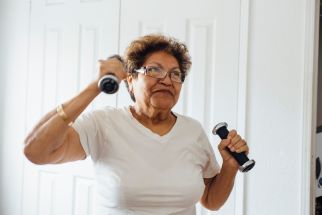May 2024
Busting 5 Common Fitness Myths
Physical activity is one of the best things you can do for your health—it boosts mood and protects your heart by preventing conditions like type 2 diabetes and high blood pressure.
But often, false beliefs can get in the way of exercise success. Here are 5 facts to correct fitness fictions.

Myth 1: Running will wreck your knees.
Contrary to popular belief, pounding the pavement (or treadmill) doesn’t lead to osteoarthritis. Running and other types of high-impact exercise might actually protect you from age-related joint pain.
How? Running may actually help knee pain—in fact, one study showed that those in a nonrunner group were more likely to have knee pain than those who run. Just start slowly and increase your distance and pace gradually. And if your knees already hurt, check with your healthcare team first.
Myth 2: You need 10,000 steps a day.
This widely recommended number isn’t based on research. In fact, it came from a marketing campaign in Japan.
Recent studies suggest you can improve your health at far lower step counts. For every 500 to 1,000 strides, your risk of dying from heart disease—or any other cause—drops.
Myth 3: No pain, no gain.
Exercise doesn’t have to be strenuous to bring benefits. Just get your heart rate up and breathe a little harder—for instance, with brisk walking.
And while experts recommend about 30 minutes a day of moderate exercise 5 days per week, any movement is beneficial. Workouts also don’t need to be long to “count.” Shorter sessions throughout the day—say, 10 minutes at a time—can add up to bigger benefits.
Myth 4: Stretch before you work out.
While stretching can improve flexibility, don’t hold a stretch when your muscles are cold, meaning before you do any activity. That boosts your risk for injury. Instead, save long stretches until after exercise.
Beforehand, do a dynamic warm-up, including movements like arm circles and leg swings. You’ll increase your blood flow and heart rate while moving your joints through their full range of motion.
Myth 5: Weight loss is the only measure of success.
Many people start exercising to lose weight, but there’s so much more to gain. For instance, moving your body leads to a healthier heart, lower risk for some cancers, and increased self-efficacy.
Exercise can also improve your strength and balance, making daily tasks easier. All these perks add up if you never lose a pound—or even if you gain some, since muscle weighs more than fat.